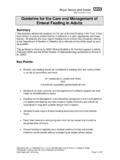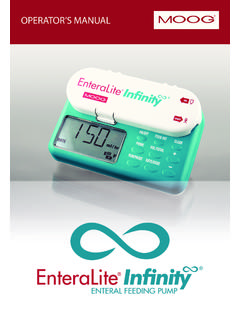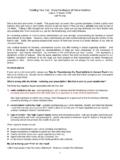Transcription of care and feeding of wigs - Heather Fleming
1 Copyright Heather K. Fleming , 2010 The care and feeding of wigs Heather Fleming wigs are both amazingly resilient and perilously fragile. With proper care , a human hair or high-quality synthetic wig can last for decades and endure repeated wearings but just one close call with a curling iron or failure to resolve snarls can severely damage a wig, or even ruin it for good. Fortunately, with just a few tips, tricks and techniques, keeping your wigs healthy and happy is easily managed. To keep wigs free from frizz and tangles, avoid brushing the wig as much as possible. This is the leading cause of the dreaded frizziness, whether it be human hair, synthetic hair, or hair growing on a persons head. Synthetic wigs are particularly prone to tangles, snarls and frizz, especially ones that are curly, and it is worse the tighter the curls are.
2 When dealing with a frizzy or messy wig, start by gently detangling and finger combing curls and waves back into place rather than combing or brushing them. If the wig is too frizzy, tangled or messy for that option, use a spray on conditioner or splash of liquid fabric softener diluted with water and saturate the problem area of the wig (using a spray bottle) before slowly and carefully working a wide toothed comb through the wig. Never try to comb a curly synthetic wig dry unless a giant frizzled mess is your goal! Work in sections with the goal of restoring order to the wig, not removing every last tangle. Once you have done this, put the wig onto a head form and carefully arrange the damp hairs as you want them to dry - this is usually close to the original style of the wig. After it is fully dry, use your fingers to make any adjustments needed.
3 It has been my experience that any long, curly synthetic wig has a limited lifespan. No matter how carefully one handles the wig, sooner or later, the curls will have been worn enough that they will become frizzy and fuzzy beyond repair - once this happens, there is no going back. Even putting the curls onto rollers will lead to limited success, though it is possible to steam some curl back into the wig, particularly if a stiffer, more stylized curl is desired. This is lack of longevity the reason that I use human hair for almost any Copyright Heather K. Fleming , 2010 wig that I want to keep around in my stock. Even a modestly priced human hair wig will endure numerous combings, brushings, rollings and wearings better than its synthetic counterpart. Add to that the fact that most synthetics wigs are fused into a single style (which is their selling point) and that it can be very difficult to restyle or reinvent a synthetic wig, and a human hair wig is both more durable and more versatile, and thus more economical in the long run.
4 And when rolled and dried correctly, a human hair wig will hold its set and curl wonderfully (more on that below). Don't get me wrong - synthetic wigs have their uses! Nothing beats a synthetic fashion wig for a shorter contemporary hairstyle or casual street wear - in those situations, buying a wig in the appropriate cut, style and color is wonderfully effective. However, when investing in a piece for your stock that can be used again and again in a variety of styles and periods, a human hair wig is far more effective. I have human hair wigs in my stock that are decades old and still used regularly in shows. During the run of a show or period of regular wear, wigs will need some love and attention. There are the obvious fixes, such as resetting droopy curls or smoothing errant flyaways, but here are a few other maintenance tips.
5 The back edge of virtually all but the shortest of wigs will quickly start to matt up this is due to contact with the back of the neck and shoulders. This matting will be far worse if the wig is worn loose with hair hanging down along the back. A good rule of them is to gently comb out loose wigs with a wide toothed comb between wearings. Start at the top and work slowly down until the hair is free from any matts. This area is also prone to collecting sweat, which then dries in the tangled hair and makes the situation even worse, so it is ideal to do this little bit of maintenance as soon as possible after wearing. If a wig is worn up off the neck, the matting will be less pronounced, so the wig may be able to go several wearing before the updo will need to be taken down and the area de-matted.
6 Copyright Heather K. Fleming , 2010 Another maintenance consideration is product. While it may be tempting to slather a wig in hairspray to hold its shape, this can often be counterproductive. Since human (especially those onstage under lights) sweat, they cause moisture to form in and on their wig. This moisture is the biggest culprit to roller sets, particularly in human hair however, more product is not the answer, as that same moisture will reactivate hair products, and when the sweat dampened wig starts to dry, can actually fuse the wig into the wrong shape. Additionally, products like hairspray build up quickly on wigs , which can result in an unpleasant patina and require more frequent washings. A better plan is to set human hair wigs with a solution of water and gel, dry thoroughly on rollers, style, and then secure with the appropriate bobby pins, nets, etc.
7 While the gel is useful in helping the style to set (and is less prone to reactivating from sweat), the real hero is the process of moisture evaporating, preferably through an indirect heat source (such as a wig dryer or bonneted hair dryer on low). Hairspray is most useful for keeping flyaways in place, and should be applied sparingly, if at all. Having said that, there are, of course, certain styles and situations where hairspray has a place - stiff styles like beehives and bouffant, shows like Greater Tuna, Steel Magnolias, or Hedwig and the Angry Inch. When it is time to wash a wig, I follow these processes For synthetic - any hair pins or other styling props are removed from the wig. If there are major snags or tangles, I attempt to remove them with my fingers. Then wig goes into a basin of warm water with a drop of Woolite and a drop of liquid fabric softner - I let the wig sit in the basin until the visible dirt is gone (hairspray, makeup, etc).
8 At that point, I remove the wig, rinse it gently under running water, lay it onto a towel and roll the towel up to squeeze water out. The wig gets a good (but gentle!) shake to remove more water- at this point, I follow the steps I listed above for putting the wig on a head and letting it dry into its shape. Copyright Heather K. Fleming , 2010 For human - all pins and styling props are removed. Unless the wig has been curled very tightly, I quickly and gently comb it out with a wide toothed comb. Then it goes into a basin of shampoo and conditioner diluted into warm water. Soak the wig until all visible dirt is removed and the hair has become saturated and limp (in the case of very curly wigs , letting them soak allows you to detangle them more easily). Then remove it, squeeze the water out (human hair absorbs water, unlike synthetics, so you need to ring out the excess), roll it up in a towel to blot, then pin it carefully to an appropriately sized head block, gently detangle it with a wide toothed comb, and let it dry.
9 If you are working with a lace front wig, be sure to block it carefully onto a head of the appropriate size so that you do not warp the lace. Once you have the lace wig on the block neatly, lay a strip of twill tape along the lace edge, and use straight pins (never T-pins!) to pin the lace down to the block the twill tape will allow the pins to hold the lace in place without placing stress or strain on the delicate lace. Only after a lace wig is blocked in this manner should any combing, detangling or styling be done. If you deal with lace wigs on a regular basis, it is a great idea to invest in one or two canvas head blocks in size 22, and 23. These blocks are also essential when styling any wig as it fully allows you to stretch the wig cap to size that will allow the wig to fit onto the average adult s head if you have ever tried to style a wig on a Styrofoam head, you will know that they are too small and lightweight to be very effective as a styling prop.
10 A decent quality canvas block will last many years, and make your life with wigs much easier! Hopefully this article has cleared up a few common wig problems. There are, of course, exceptions to every rule , and my advice should be taken as just that, advice, based on my own experiences.








